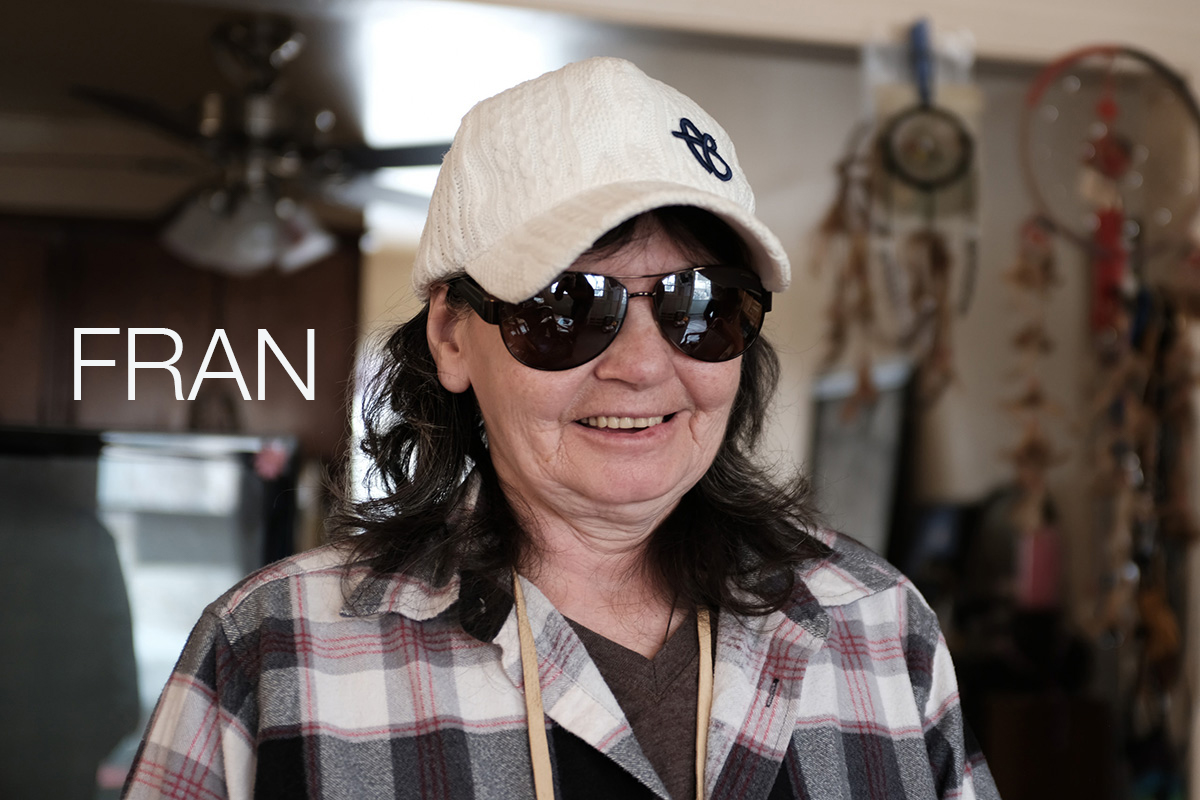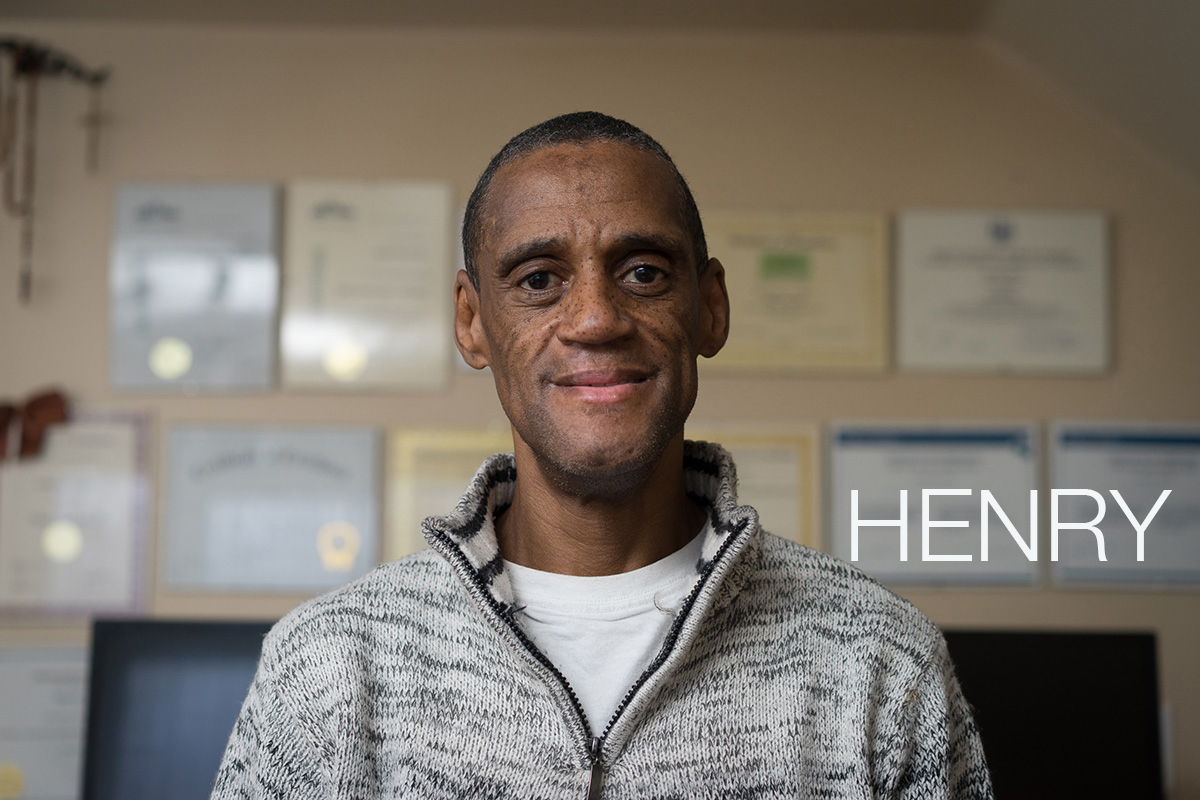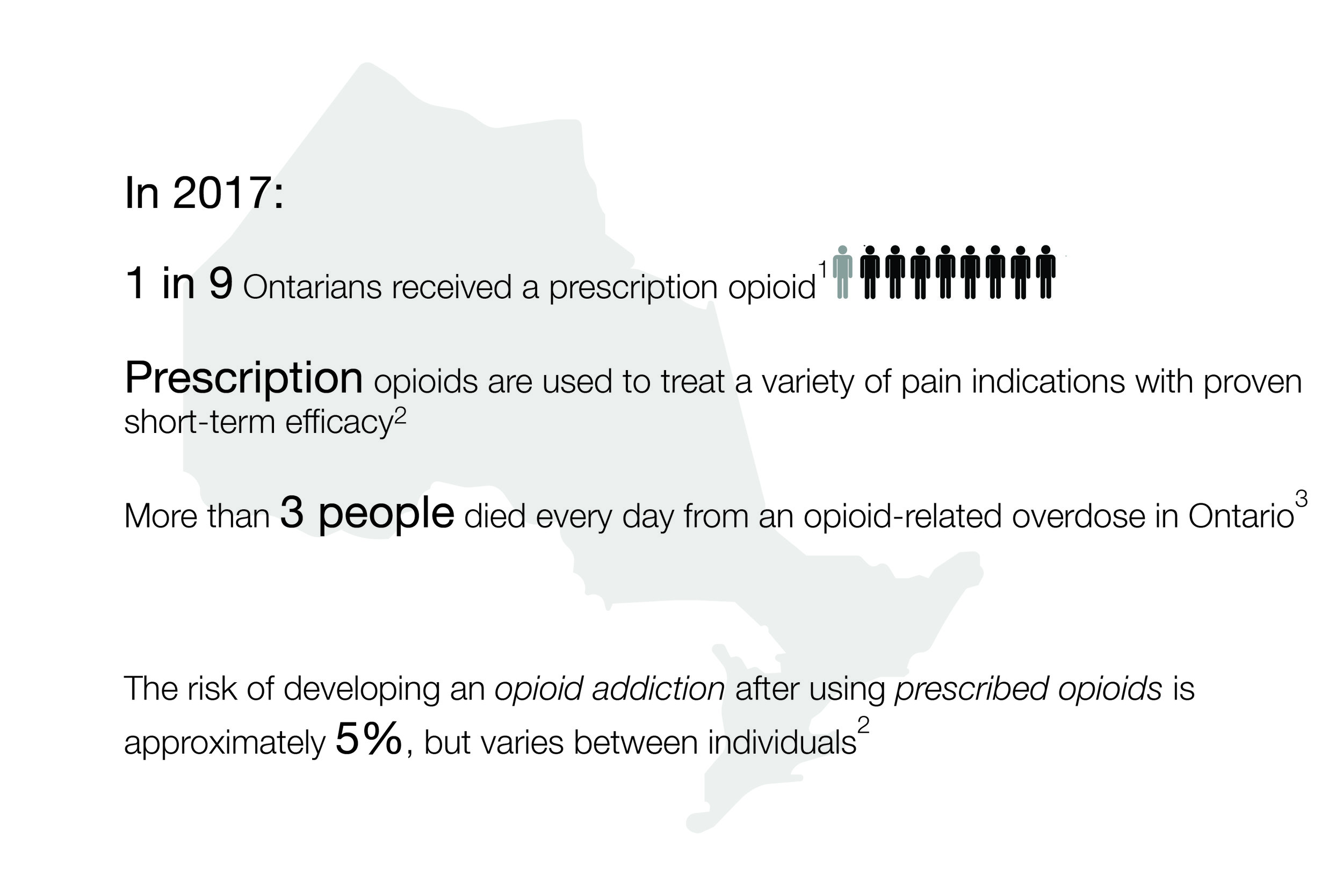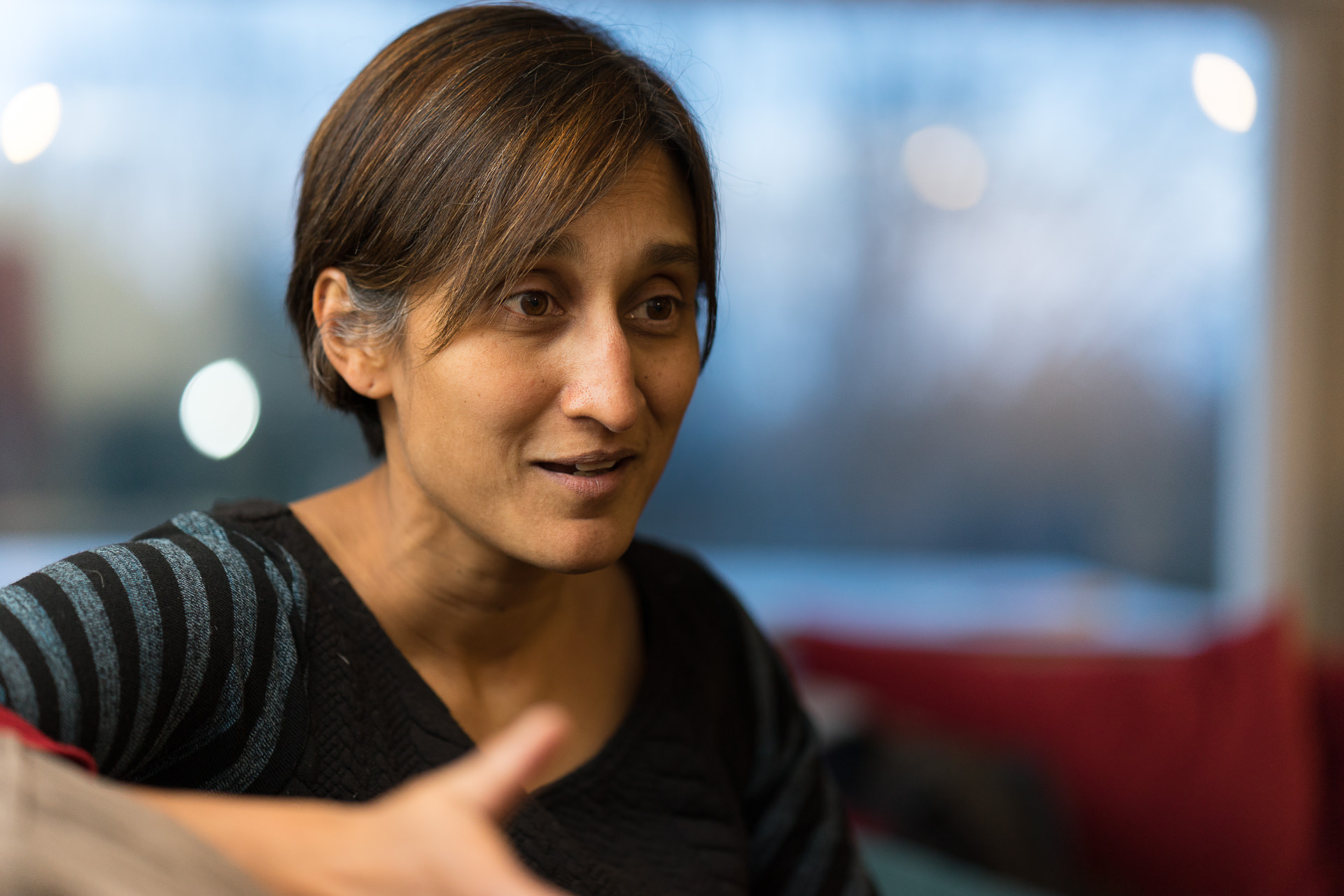
THE OPIOID CHAPTERS brings you the stories of 11 people living on the front lines of a constantly shifting opioid landscape in Ontario. Our team attempted to move beyond the statistics and capture the realities of peoples’ triumphs, struggles and fears. These stories are in their own words.
OUR HOPE is that these stories spark a conversation about both the risks and benefits of opioids, and shed light on how a lack of social supports and health services can influence patterns of use, access, and harm.
THESE EXPERIENCES are complex and reveal that there is no singular solution to this issue. But to begin to effect positive change, we need to have an understanding of the unique impact that opioids have on different people’s lives.
⥥⥥
⥥⥥
CHAPTER ONE:
BENJAMIN

Benjamin developed abscesses in his teeth that were so painful he could barely work or spend quality time with his children. Without the financial means to pay for surgery, he was prescribed Percocets for the pain by his doctor. His tolerance increased over the course of a few months and he found himself taking more than 12 pills a day. If he ran out of his prescription early, he looked to the street to fill the gap.
“That’s when I realized I had a drug problem.”
“I BELIEVE I SUFFERED FROM MENTAL ILLNESS AS A CHILD AND HAD TRAUMA ON TOP OF THAT, AND FOUND MYSELF IN A POSITION WHERE I TOOK OPIOIDS.”
CHAPTER TWO:
JACKIE

Jackie, a wife and a mother to two young girls, is from a small town in eastern Ontario. During a night of casual drinking and hanging out, a friend crushed up a few Percocet pills and offered them to Jackie. Jackie had experimented with cocaine years earlier, so she thought, "Sure, why not?"
That was nearly a decade ago.
For the next eight years, Jackie would use Percocets on a daily basis, leading to conflict with her family and friends, and a significant amount of financial debt. Today, Jackie is in recovery.
“I DIDN’T THINK TOO MUCH ABOUT IT. IT WOULD JUST BE A ONE-TIME THING. BUT THEN IT BECAME THIS REALLY BAD CYCLE.”
⥥⥥
⥥⥥
CHAPTER THREE:
MICHAEL

Fifteen years ago, Michael suffered a back injury while working as a cameraman. Over the course of the week-long commercial shoot, the pain continued to spread through his back into his right leg, causing a loss of sensation and limiting his movement. The pain reached a point where he could hardly walk, and he had to move around on all fours most of the time. It has never completely resolved. He has tried almost everything available to him to help his pain—acupuncture, laser therapy, physiotherapy—and undergone multiple tests. Opioids are the only treatment that gives him some degree of pain relief. Michael has been on a stable dose for several years, and has been able to return to work.
“I UNDERSTAND THE NEED TO PROTECT PEOPLE, BUT WHAT WE DON’T HEAR ABOUT ARE PEOPLE LIKE ME WHO REQUIRE OPIOIDS TO FUNCTION. WITHOUT OPIOIDS, I AM NOT GOING TO BE A FUNCTIONING MEMBER OF SOCIETY ANYMORE.”
⥥⥥
CHAPTER FOUR:
DAN

During one of his shifts as a paramedic, Dan was caring for a patient who had fallen off a roof. The patient suddenly became uncooperative while he was being extricated from his vehicle. In the struggle to calm the patient down, Dan hurt himself. He continues to live with the painful back injury he sustained during that shift, and is no longer able to work as a paramedic. After trying numerous treatment options, Dan found that opioids are the only treatment that dulls his pain.
He is worried that Canadian doctors are being pressured to not prescribe opioids—even when the opioids work—leaving people like himself in intolerable pain and with few alternatives.
“OVER THE COURSE OF MY CAREER, I HAVE INJURED MY BACK FOUR TIMES. BUT THIS TIME, INSTEAD OF SLOWLY GETTING BETTER, IT JUST KEPT GETTING WORSE. ”
⥥⥥
CHAPTER FIVE:
SEAN

Sean grew up in an abusive situation on a Canadian Armed Forces base and left home at 13. He lived on the streets on and off, was placed into emergency care and was sexually abused there. Later in his teens, he fell in love, and he and his partner were expecting a child. Seven months into her pregnancy, she drowned.
His addictions arose after these traumatic experiences—first to alcohol, then opioids. He was homeless and addicted. After struggling with a decade-long opioid addiction, Sean put together the pieces he needed for recovery: advocating for others, methadone treatment and building a home where he could have a cup of tea, peacefully and undisturbed.
“MY DOCTOR, MY ADDICTIONS COUNSELLOR AND MY GRANDMOTHER, THEY NEVER GAVE UP ON ME, DESPITE THE STUPID STUFF I WAS DOING. I WOULD ASK EVERYBODY OUT THERE TO DO THE SAME... JUST DON’T GIVE UP ON PEOPLE.”
CHAPTER SIX:
FRAN

When Fran was 13 years old, she lost her mother to cirrhosis of the liver. She began using drugs during her mother’s illness. When her mother died, Fran’s family broke up and went their separate ways, and Fran’s substance use increased. She wound up spending 15 years in jail for reasons related to her drug use. She is currently being treated with Suboxone and is no longer taking other drugs.
Fran hopes the stigma and discrimination that former drug users encounter in the medical community will change.
“ONCE YOU ARE LABELLED AN ADDICT, EVERYTHING CHANGES. WHEN YOU WALK INTO A MEDICAL FACILITY AND THEY KNOW YOU WERE A DRUG ADDICT... YOU ARE TREATED DIFFERENT. THAT’S JUST THE WAY IT IS.”
⥥⥥
CHAPTER SEVEn:
HENRY

When Henry was a child, his mother was a sex worker. His father had a substance use disorder and was in and out of jail, where he later died. Henry explains that as a baby, when he would cry, his parents would resort to giving him drugs or alcohol to keep him quiet. His childhood led to a life of substance use, theft, prostitution and incarceration.
Henry has since graduated from college and works as a community services worker with public health in Ottawa, where he lives with his husband, Pierre, and their three rescue chihuahuas. Henry is a strong advocate for giving drug users the tools they need to start their lives over.
“THE ONLY DIFFERENCE BETWEEN ME AND OTHERS IS THAT THEY WENT TO SCHOOL AND HAD A CHILDHOOD. YEAH, THERE ARE THE OPIOIDS. BUT THERE IS ALSO THE LIFE LINE THAT GETS YOU THERE.”
⥥⥥
CHAPTER EIGHt:
GREG

Greg’s wife developed an unusual condition in her leg and hip which resulted in an intolerable amount of pain. She was eventually prescribed fentanyl to help manage her day-to-day life. Greg said his wife had an unexplained medical condition where she would pass out. It was unclear whether this condition was the result of her pain, her medication or some other cause. But it became a regular part of their lives.
One morning, Greg came down from his bedroom to find his wife slouched over on a chair in the living room. As time passed and she still was not waking up, Greg went over to see if she was OK and he realized her body was cold. He tried checking for her heartbeat and called 911 immediately. She was dead.
“WHEN SHE WASN’T BREATHING, I CALLED 911 RIGHT AWAY. I WAS JUST HOPING I WAS DOING SOMETHING WRONG OR THAT I WAS MISSING SOMETHING.”
⥥⥥
chapter nine: RUPA
Rupa is a family physician who took over a family practice with a number of patients on high doses of opioids.
“SOMETIMES YOU HAVE TO LISTEN TO PATIENTS AND NOT JUST REACH FOR A PRESCRIPTION PAD.”
chapter ten: LISA
Lisa is a community outreach addictions counsellor who works on a family health team.
“WE KNOW THAT WHEN SOMEBODY IS MOTIVATED TO MAKE A CHANGE, THAT MOMENT CAN BE VERY POWERFUL. BUT IT IS OFTEN FLEETING. WE MISS IT ALL THE TIME.”
chapter eleven: ANGELA
Angela is a physician who, for three decades, has been treating people who are experiencing pain, and who is currently director of an interdisciplinary pain clinic.
“FOR MANY YEARS I HAVE SPOKEN ABOUT THE DUAL TRAGEDY OF OPIOIDS. TOO MUCH AND TOO LITTLE. ONE SIZE DOES NOT FIT ALL.”





















